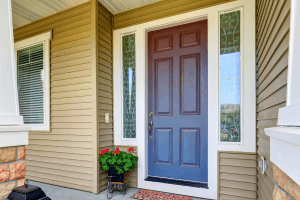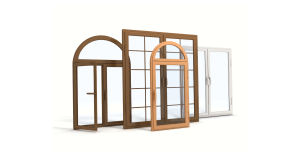Harsh weather and extreme variations in temperature can adversely affect your doors and windows, causing them to wear down faster than they should. From the scorching summer heat to gusty winds to pelting sleet and rain, any structures exposed to the elements can lose their appeal and even structural functionality owing to the regular expansion and contraction, and possible moisture absorption.
A combination of these factors may result in:
Shrinking, bowing, and warping
Some materials, especially timber, are more vulnerable to humidity and extreme temperatures, causing them to lose their structural integrity. Wooden doors, door frames, and window frames that are not properly sealed tend to shrink when subjected to extreme cold and moist/dry conditions, and begin to bow or warp, losing their efficiency and ability to keep cold air out.
To prevent this, timber surfaces should be regularly treated with sealant or paint. Aluminum and PVC are more resistant to distortion from the elements.
Condensation
Condensation forms when there is no room for warm air in your home to escape to the cooler outside environment, which means that your windows are energy efficient. This kind of condensation can be reduced by minimizing the humidity inside your home with a humidifier. But if the condensation forms between the panes of your double- or triple-glazed panes, you should get your windows inspected for a leak.
Drafts
Old and poorly fitted doors and windows are more susceptible to damage by severe weather, causing them to become drafty. Weatherstripping can help improve their insulation capability, but it is best to consider replacing them.
Hardware failure
The stress from alternating hot and cold conditions, as well as ice that settles in the latches, hinges, handles, and other door and window mechanisms can cause them to become jammed or damaged. Awning and casement windows are more vulnerable because of their operating mechanism compared to sliding windows. Regular cleaning and greasing of these components can keep them functioning well for longer.
Ice formation
During the cold winter months, any moisture that settles in open spaces between windows and doors and the frames turns to ice, making it hard to open or close your windows and doors without damaging the weather stripping. It is important to replace weather stripping regularly to improve the energy efficiency of your doors and windows.
Final Note
You can reduce the effects of adverse weather on your doors and windows by considering their orientation with regard to the direction of the sun. Typically, western and southern exposures are harshest. If you cannot change the design of your home, consider other strategies, such as the following: using lighter paint colours to absorb less heat; installing storm doors and windows with low-E glass; and installing overhang protection.

